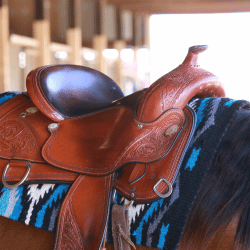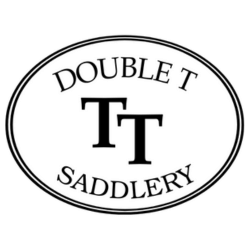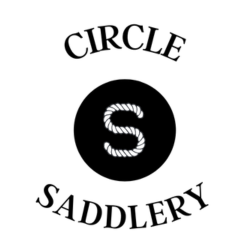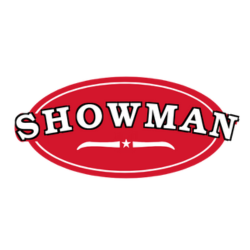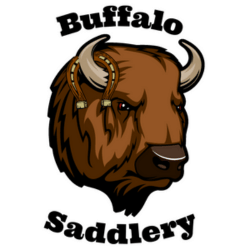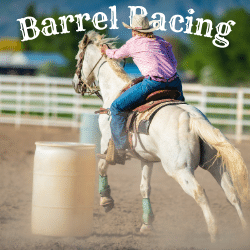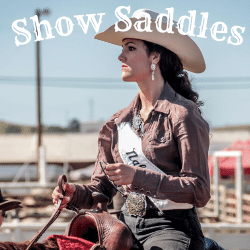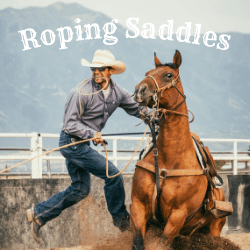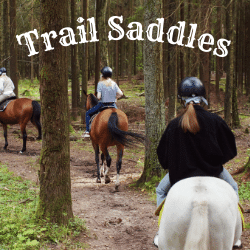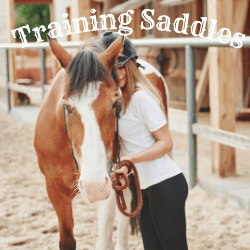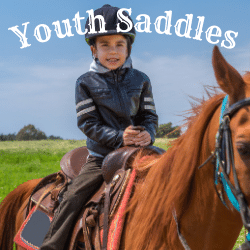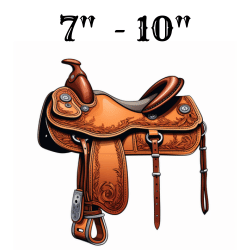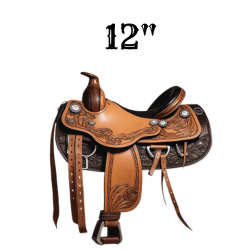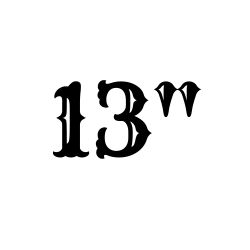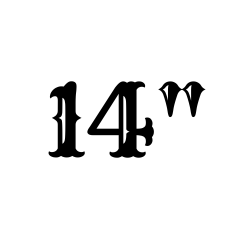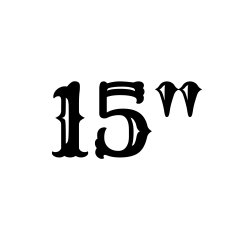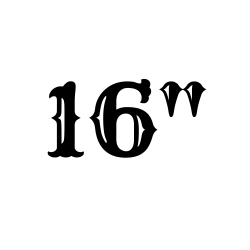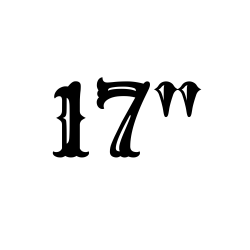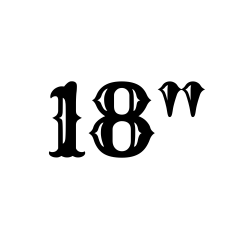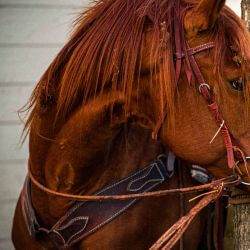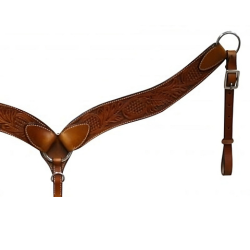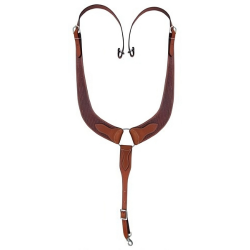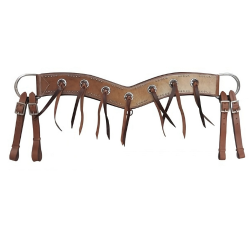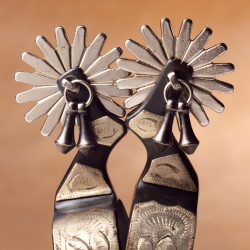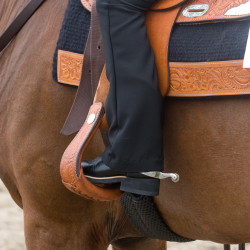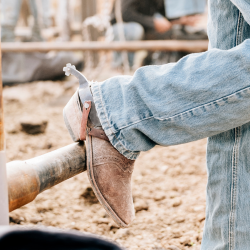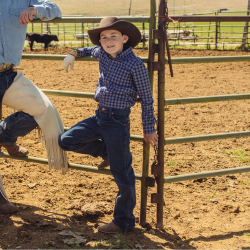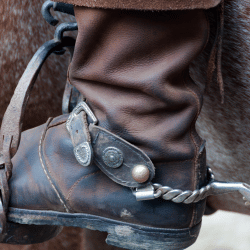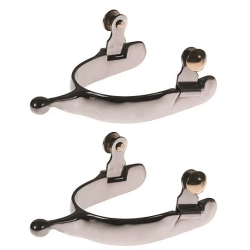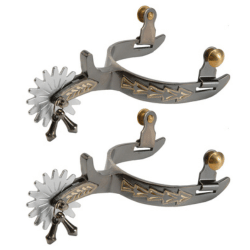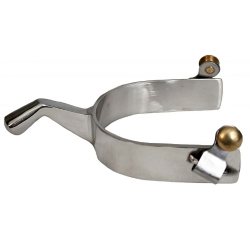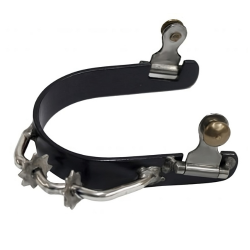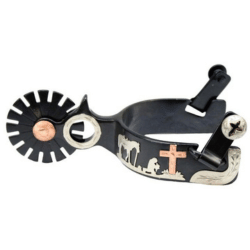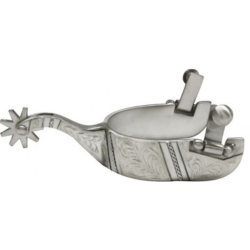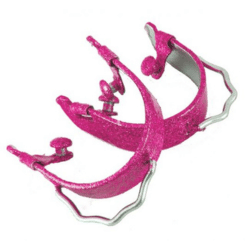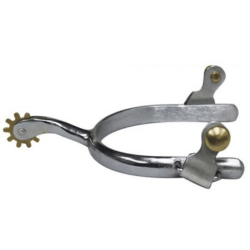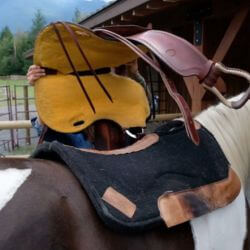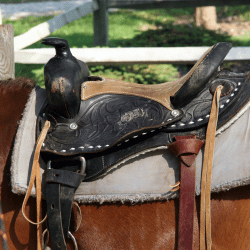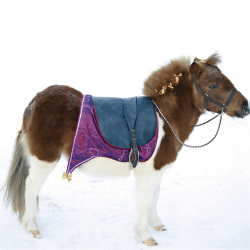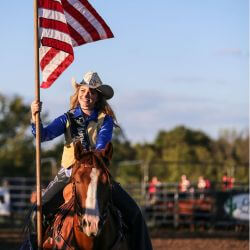Welcome to our blog post on understanding and using Western breast collars for horses. If you're a Western rider or have an interest in horse tack, you've likely come across this important piece of equipment. In this post, we will explore the importance of breast collars in Western riding, the benefits they provide, the potential consequences of not using one, and how to properly fit and adjust a breast collar for your horse. Additionally, we will discuss the different types of Western breast collars available and provide tips on maintaining and caring for your breast collar to ensure its longevity and effectiveness. So, whether you're new to Western riding or looking to enhance your knowledge on this essential tack item, read on to discover all you need to know about Western breast collars for horses.
Introduction to Western Breast Collars
Western breast collars are an integral part of the Western riding equipment ensemble. Designed to secure the saddle in place and provide stability during various maneuvers, breast collars play an essential role in the safety and comfort of both horse and rider.
A Western breast collar is a strap or harness that runs across the chest of the horse, attaching to the saddle on either side. It is typically made of leather, but can also be constructed from synthetic materials such as nylon or neoprene. The collar is secured around the horse's chest, just behind the front legs, and is adjustable to ensure a proper fit.
The primary function of a Western breast collar is to prevent the saddle from sliding backward or shifting out of position while riding. It helps distribute the pressure and weight of the saddle more evenly, reducing the risk of discomfort or injury to the horse.
In addition to its practical purpose, a breast collar can also enhance the appearance of the horse and rider. It adds a touch of Western flair to the overall aesthetic and can be customized with decorative accents such as conchos, buckles, or tooling.
Now that we have introduced Western breast collars and their general purpose, let's delve deeper into why they are considered essential in Western riding.
The Importance of Breast Collars in Western Riding
Breast collars play a crucial role in Western riding, providing several important benefits for both horse and rider. Understanding the significance of using a breast collar can help you make an informed decision when it comes to selecting and utilizing this piece of tack. In this section, we will explore why breast collars are necessary in Western riding, the benefits they offer, and the potential consequences of not using one.
Why Breast Collars are Necessary in Western Riding
-
Saddle Stability: Western riding often involves fast-paced activities such as roping, cutting, or barrel racing, which require quick and sudden movements. A breast collar helps anchor the saddle in place and prevents it from sliding backward or shifting during these maneuvers. This stability is crucial for maintaining balance and control, ensuring the safety of both horse and rider.
-
Weight Distribution: The weight of the rider and the saddle can exert pressure on the horse's back. A properly fitted breast collar helps distribute this weight more evenly, reducing the concentrated pressure on the withers and shoulders. By redistributing the weight, the breast collar helps minimize discomfort and potential soreness, promoting a more comfortable ride for the horse.
-
Enhanced Maneuverability: Western riding often involves sharp turns, sudden stops, and quick changes in direction. A breast collar helps keep the saddle centered and secure, allowing the horse to move freely and perform these maneuvers with greater agility. It provides additional support to the saddle, ensuring it remains in the correct position even during dynamic movements.
Benefits of Using a Breast Collar
-
Improved Safety: By preventing the saddle from slipping or shifting, a breast collar reduces the risk of accidents or falls. It provides an extra layer of security, especially when engaging in activities that require significant movement or when riding on uneven terrain.
-
Comfort for the Horse: A properly fitted breast collar helps distribute pressure more evenly across the horse's chest, relieving strain on the withers and shoulders. This can minimize the occurrence of soreness or discomfort, allowing the horse to perform at its best and enjoy a more pleasant riding experience.
-
Style and Aesthetic Appeal: Apart from their functional benefits, breast collars can also enhance the overall appearance of the horse and rider. They come in a variety of designs and styles, allowing riders to personalize their tack and showcase their unique Western flair.
Potential Consequences of Not Using a Breast Collar
-
Saddle Slippage: Without a breast collar, the saddle may slide backward or shift out of position during fast or abrupt movements. This can cause the rider to lose balance and potentially fall off, resulting in significant injuries.
-
Discomfort and Soreness: The absence of a breast collar can lead to concentrated pressure on the horse's withers and shoulders. Over time, this can cause discomfort, soreness, and even the development of pressure sores or galls.
-
Limited Maneuverability: Without the added stability provided by a breast collar, the saddle may become unbalanced during quick turns or stops, hindering the horse's ability to perform precise maneuvers and compromising its overall agility.
Understanding the importance of breast collars in Western riding, as well as the benefits they offer, highlights their role as an essential piece of tack. In the following sections, we will explore the different types of Western breast collars available, how to properly fit and adjust them, and tips for their maintenance and care.
Understanding the Different Types of Western Breast Collars
When it comes to Western breast collars, there are various types available, each designed to cater to different riding disciplines and preferences. Understanding the different types can help you choose the most suitable breast collar for your specific needs. In this section, we will explore the four main types of Western breast collars: roper style breast collars, tripping collars, pulling collars, and performance collars.
Roper Style Breast Collars
Roper style breast collars are commonly used in roping events, where the horse and rider work together to rope and restrain cattle. These collars are typically wider and sturdier than other types, providing extra support and stability during intense activities. Roper style breast collars often feature a wide center strap that rests across the horse's chest, along with adjustable side straps that attach to the saddle rigging. The wider design helps distribute pressure evenly and reduces the risk of the collar digging into the horse's chest.
Tripping Collars
Tripping collars, also known as working collars or breast plates, are commonly used in working cattle disciplines, such as team penning or cutting. These collars are designed to sit higher on the horse's chest, closer to the base of the neck. Tripping collars typically have a narrower and more streamlined design compared to roper style collars. They often feature a center strap that is attached to the cinch and two adjustable side straps that connect to the saddle rigging. The positioning of the tripping collar allows for greater freedom of movement in the horse's shoulders, facilitating quick and agile maneuvers.
Pulling Collars
Pulling collars, as the name suggests, are primarily used in activities that involve pulling heavy loads, such as draft or pulling competitions. These collars have a distinct shape, with a curved or U-shaped design that wraps around the horse's shoulders. Pulling collars often have a wide center strap that rests on the chest and two side straps that connect to the saddle rigging. The unique shape of the pulling collar helps distribute the weight of the load evenly across the horse's shoulders, reducing strain and providing support during pulling tasks.
Performance Collars
Performance collars are a versatile option that can be used in various Western riding disciplines. These collars are often designed with a combination of functionality and aesthetics in mind. Performance collars can vary in width and style, offering choices to suit different preferences. They typically have a center strap that rests on the horse's chest, along with adjustable side straps that attach to the saddle rigging. Performance collars may feature decorative accents, such as tooling, buckles, or conchos, allowing riders to personalize their tack while still ensuring the functionality of the collar.
Understanding the different types of Western breast collars can help you select the most appropriate one for your riding style and needs. Consider the specific activities you engage in and the level of support and stability required to make an informed decision. In the next section, we will discuss how to properly fit and adjust a Western breast collar for optimal performance and comfort.
How to Properly Fit and Adjust a Western Breast Collar
Properly fitting and adjusting a Western breast collar is essential to ensure its effectiveness and the comfort of your horse. A poorly fitted or improperly adjusted breast collar can lead to discomfort, restricted movement, or even potential injuries. In this section, we will guide you through the steps to measure your horse for a breast collar, adjust the straps and tugs, and check for proper fit and comfort.
Measuring Your Horse for a Breast Collar
-
Measure the girth: Use a soft measuring tape to measure the circumference of your horse's chest just behind the front legs, where the breast collar will sit. Ensure the tape is snug but not too tight. Note down the measurement.
-
Measure the shoulder length: Measure from the base of the neck, where the breast collar will rest, to the point where the saddle rigging attaches on each side. This measurement will help determine the length of the breast collar straps.
Adjusting the Straps and Tugs
-
Attach the breast collar: Place the breast collar on your horse's chest, ensuring it sits comfortably just behind the shoulders. The center strap should rest in the center of the chest, while the side straps hang down the sides.
-
Adjust the center strap: The center strap should be adjusted so that it is snug against the chest but not overly tight. You should be able to fit two fingers between the strap and your horse's chest.
-
Adjust the side straps: The side straps should be adjusted to allow for freedom of movement in the shoulders. They should be loose enough to avoid restricting the horse's natural motion but not so loose that the breast collar hangs too low or slides out of position.
-
Check the tug angle: The tugs, which attach the breast collar to the saddle rigging, should be at a 45-degree angle when properly adjusted. This angle provides optimal support and stability. Adjust the tugs as needed to achieve the correct angle.
Checking for Proper Fit and Comfort
-
Range of motion: Once the breast collar is properly adjusted, check that your horse has a full range of motion in the shoulders and can move freely without any restrictions. The breast collar should not hinder the horse's movements in any way.
-
Comfort and pressure points: Run your hand along the underside of the breast collar to ensure there are no rough edges or areas that could cause discomfort or rub against your horse's skin. Check for any signs of irritation or pressure points, and make adjustments if necessary.
-
Even pressure distribution: When the breast collar is properly fitted, it should distribute pressure evenly across the chest and shoulders. There should be no excessive pressure in one area or any areas where the breast collar is too loose and not providing adequate support.
Regularly check the fit and adjustment of your Western breast collar, as the horse's body shape may change over time due to factors such as weight gain or muscle development. By ensuring a proper fit and adjustment, you can maximize the functionality and comfort of the breast collar for your horse. In the next section, we will discuss the maintenance and care of your Western breast collar to ensure its longevity and effectiveness.
Maintaining and Caring for Your Western Breast Collar
Proper maintenance and care of your Western breast collar are essential to ensure its longevity and continued effectiveness. Regular cleaning, inspection for wear and damage, and proper storage are key practices to keep your breast collar in optimal condition. In this section, we will guide you through the steps to maintain and care for your Western breast collar.
Regular Cleaning and Conditioning
-
Remove dirt and debris: After each use, remove any dirt, sweat, or debris from your breast collar. Use a soft brush or cloth to gently scrub away dirt and grime. Pay special attention to the areas where the breast collar comes into direct contact with the horse's skin.
-
Clean with mild soap: Prepare a solution of warm water and mild soap. Dip a clean cloth or sponge into the soapy water and gently clean the entire surface of the breast collar. Avoid saturating the leather excessively, as it can lead to damage or warping.
-
Rinse thoroughly: After cleaning, rinse the breast collar thoroughly with clean water to remove any soap residue. Ensure all soap is completely rinsed off, as it can cause skin irritation or damage to the leather if left behind.
-
Condition the leather: Once the breast collar is clean and dry, apply a leather conditioner to keep the leather supple and prevent it from drying out or cracking. Follow the instructions on the conditioner product for the best results. Conditioning helps maintain the integrity of the leather and prolongs its lifespan.
Inspecting for Wear and Damage
-
Check for loose stitching: Regularly inspect the stitching on your breast collar to ensure it is secure and intact. Loose or broken stitching can weaken the structure of the collar and compromise its effectiveness. If you notice any loose threads or broken stitching, have it repaired promptly.
-
Inspect for cracks or tears: Examine the entire surface of the breast collar for any signs of cracks, tears, or excessive wear. Pay attention to areas that experience the most stress, such as the attachment points and buckle holes. If you notice any damage, assess whether it can be repaired or if the breast collar needs to be replaced.
-
Evaluate hardware condition: Check the buckles, D-rings, and other hardware components for signs of rust, corrosion, or damage. Ensure all hardware is in good working condition and securely attached. If any hardware is damaged or showing signs of wear, consider replacing it to maintain the integrity of the breast collar.
Proper Storage to Extend Lifespan
-
Clean and dry before storage: Before storing your breast collar, ensure it is clean and completely dry. Any moisture left on the leather can lead to mold or mildew growth, causing damage to the collar.
-
Store in a cool, dry place: Choose a storage area that is cool, dry, and well-ventilated to prevent the growth of mold or mildew. Avoid storing the breast collar in direct sunlight or areas with extreme temperature fluctuations, as these can cause the leather to warp or fade.
-
Protect from pests: To prevent damage from pests, such as mice or insects, store your breast collar in a sealed container or use a breathable storage bag designed specifically for horse tack.
By following these maintenance and care practices, you can ensure the longevity of your Western breast collar and maintain its functionality and appearance over time. Properly cared for, your breast collar will continue to provide the necessary support and stability for your Western riding endeavors. In the final section, we will summarize the key points discussed and conclude our comprehensive guide to understanding and using Western breast collars for horses.

